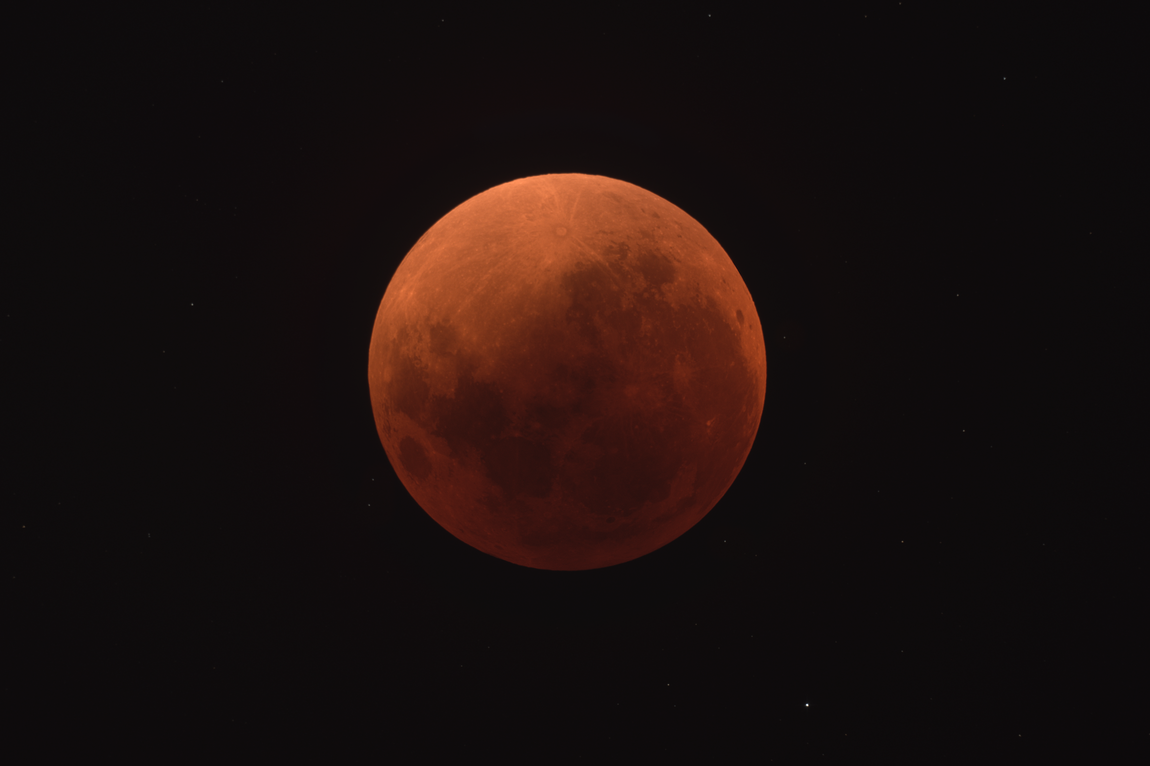Total Lunar Eclipse
During a lunar eclipse, the moon appears red due to the way the light interacts with Earth’s atmosphere. Since the Earth is blocking direct sunlight, the only light it can receive has been refracted through the atmosphere, and the photons most likely to survive the trip are those with longer wavelengths: red light. This phenomenon is called Rayleigh Scattering, and it’s also responsible for the color of sunsets and the sky during the day.
Captured using a Fujifilm X-A5 and a GSO 6" F/4 Newtonian mounted on a Celestron AVX. This image is a composite of two stacks of 15 2-second exposures at 800 ISO, one aligned using stars and the other using the moon. No calibration frames were used.
